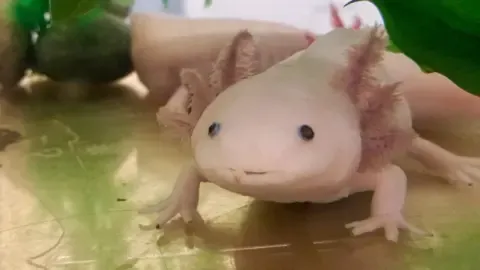
A Glimmer of Hope for the Endangered Axolotls in Mexico City
In a remarkable turn of events, critically endangered axolotls bred in captivity are proving they can survive and thrive in the wild wetlands of Mexico City. This significant discovery offers a glimmer of hope for a species teetering on the brink of extinction.
The axolotl (Ambystoma mexicanum), native to the historic Lake Xochimilco, is famed for its unique ability to regenerate lost limbs and organs, along with a perpetual juvenile appearance due to a phenomenon known as neoteny. This fascinating creature has captured the hearts of many around the globe, but its wild population has plummeted by more than 80% in the last two decades due to factors such as urbanization and pollution.

In a study led by a team from the Autonomous University of Baja California, researchers tracked 18 captive-bred axolotls they had released in the wetlands. Astonishingly, all the released axolotls survived, with some even gaining weight and foraging successfully for food. Lead researcher Alejandra Ramos elaborated that this study highlights how axolotls can be reintroduced into their habitats if environmental conditions are conducive.
The success marked a watershed moment for conservation efforts. Historically, captive-bred animals often struggle to adapt to wild settings, leading many scientists to express concerns about their chances for survival. But these enchanting salamanders did not just survive; they formed bonds with each other, displaying social behaviors that researchers had not anticipated. Understanding these dynamics could further influence future reintroduction efforts.

As urbanization continues to threaten their existence, initiatives to repair and restore habitats like the chinampas, a historic farming technique, may provide new opportunities for axolotls and other native species. Dr. Luis Zambrano, co-lead of the study, emphasized the cultural significance of the axolotl, stating that losing this creature would mean losing a part of Mexican identity.
With the efforts to restore their native ecosystems, there exists a genuine hope for these remarkable amphibians. But the question remains: can we sustain momentum and commitment to ensure the long-term survival of the axolotl? It will take a concerted effort from both scientists and the community. As Dr. Ramos stated, everyone can contribute to conservation, highlighting the interconnectedness of humans and wildlife.
What are your thoughts on the restoration efforts for the axolotl? Are there similar efforts you know of in your region? Share your insights in the comments below.